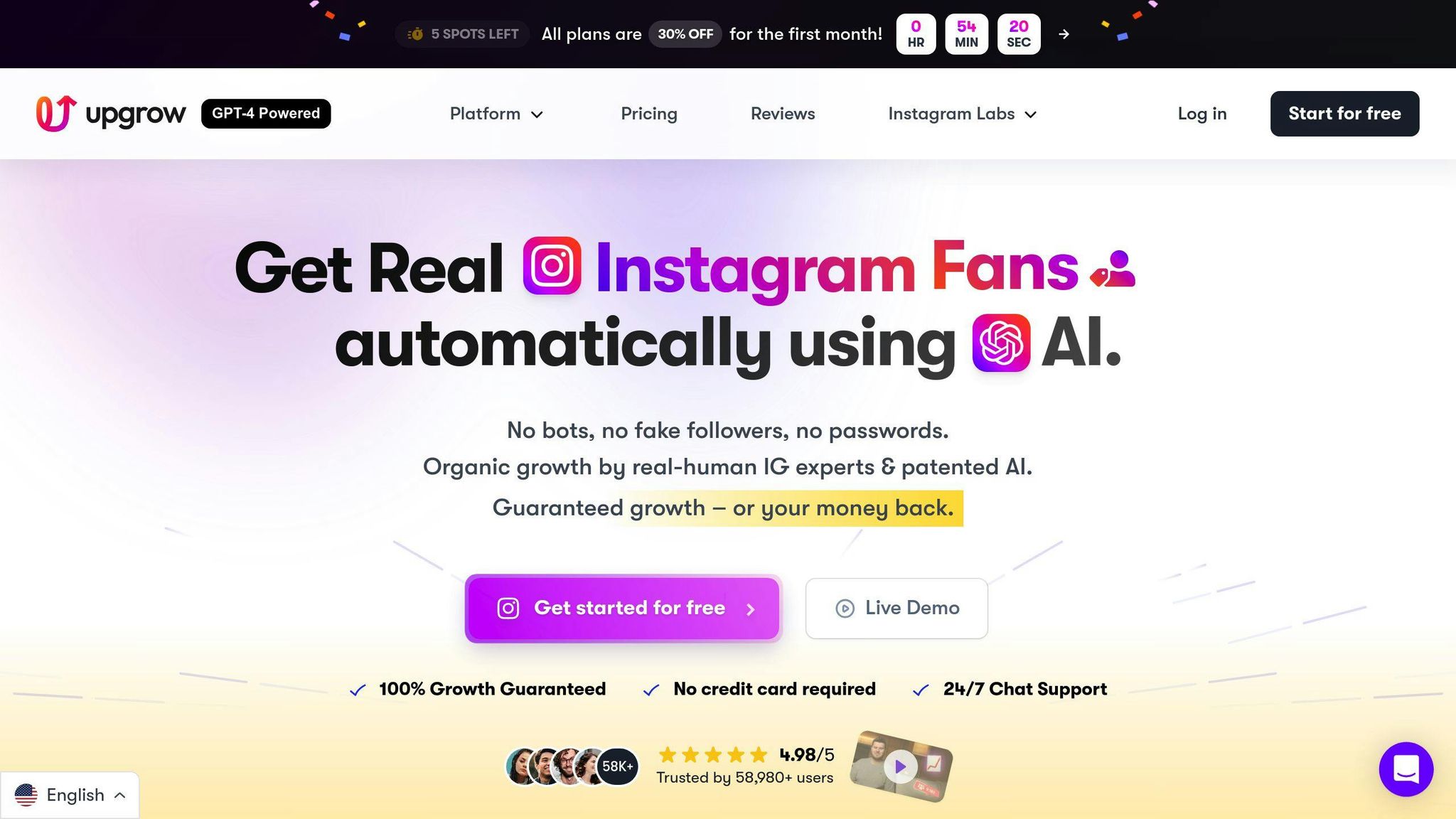Ultimate Guide To Instagram A/B Testing
Learn how to effectively boost your Instagram engagement through A/B testing, focusing on key elements, tools, and strategies for success.
Learn how to effectively boost your Instagram engagement through A/B testing, focusing on key elements, tools, and strategies for success.

Ready to use Instagram's 'Broadcast Channels'? Our guide makes it easy to engage your followers. Explore the new feature now!

Want to boost your Instagram engagement and understand what works best for your audience? A/B testing is the answer. It’s all about comparing two versions of a post to see which gets the best results. Here’s what you’ll learn:
A/B testing helps you create data-driven content that resonates with your audience. Start small, analyze results, and refine your strategy for better performance. Let’s dive deeper into how to make it work for you.
When running A/B tests, focus on tweaking one element at a time to get clear results. Some key areas to experiment with include:
Stick to elements that match your audience insights from earlier tests (as mentioned in the Introduction). Testing too many variables at once can muddy your results, making it hard to pinpoint what actually worked. Keep it simple - one variable at a time for actionable takeaways.
For A/B testing to provide useful insights, you’ll need to set clear parameters. Here’s what to focus on:
This approach helps you:
Audience Segmentation is another critical step. Break your audience into groups based on:
These segments will help you tailor your tests and get more detailed insights.
Instagram provides several ways to run A/B tests effectively. Here’s a quick comparison:
| Testing Method | Best For | Key Features |
|---|---|---|
| Facebook Ads Manager | Paid campaigns | Built-in analytics, precise targeting |
| Manual Testing | Organic posts | Full control, no extra costs |
| Third-party Tools | Advanced analytics | Automated tracking, detailed reporting |
If you're testing organic content, keep external factors consistent to avoid skewed data. This means sticking to:
Multivariate testing goes beyond simple A/B testing by evaluating how different elements interact with each other. Instead of testing just one variable, this method allows you to optimize several content elements at the same time.
Here’s how to approach it effectively:
Some useful combinations to test include:
These detailed insights become even more actionable when combined with AI tools, which can analyze patterns and performance more efficiently.
AI tools can take your Instagram testing to another level by streamlining the analysis process and uncovering trends faster than manual methods. Here’s how AI can help:
Focus your AI analysis on metrics that align with your campaign’s goals. This ensures you’re not overwhelmed by unnecessary data and can quickly hone in on what works.
Sequential testing builds on the insights from multivariate and AI-driven methods, offering a structured way to fine-tune your content over time. Here’s how to break it down:
1. Foundation Testing
Start by testing major elements like post types and optimal posting times to establish a baseline.
2. Refinement Phase
Once you know what works, focus on improving top-performing elements, such as video formats or call-to-action (CTA) styles.
3. Optimization Stage
Make small, precise adjustments - like tweaking CTA button colors - to maximize engagement.
Statistical significance is key when interpreting A/B test results. To ensure your decisions are based on reliable data, keep test durations equal for all variations and maintain consistent conditions throughout. These practices help ensure your findings align with the strategies outlined earlier.
Focus on tracking these engagement metrics:
Use your test results to refine your content approach:
Performance Analysis
Track metrics that directly relate to your campaign goals. For example, if you're comparing carousel posts to single images, monitor:
Strategic Implementation
Leverage audience segmentation insights from earlier tests to analyze how different groups respond to your content variations. Tools powered by AI can uncover audience behavior patterns, helping you refine your strategy for better results.
Always prioritize data-backed insights over assumptions to improve content performance effectively.
Building on the principles from the "Setting Up A/B Tests" section, avoid these common pitfalls that can undermine your results:
Testing Too Many Variables
Stick to testing one element at a time to clearly identify what impacts performance. For instance, if you're testing post timing, avoid changing caption lengths simultaneously.
Ignoring External Factors
Consider broader influences that might affect your results, such as:
Drawing Conclusions Too Soon
Making decisions based on incomplete data can lead to wasted resources. Automated analytics tools can help by offering clear, actionable insights and ongoing performance tracking.
Schedule weekly tests during high-activity hours, typically between 12 PM and 4 PM. Use Instagram Insights to confirm the best times for your specific audience, as engagement can vary based on time zones and demographics. This ensures your tests are tailored to your audience's habits and preferences.
Stay true to your brand's identity by testing small changes that reflect your core values and protect user privacy. This approach also aligns with Instagram's compliance requirements, as discussed in the Tools section. Focus on testing variations that:
Incorporate A/B testing into your broader content strategy by reviewing results quarterly and turning insights into actionable steps. Use tools like UpGrow's AI-powered analytics dashboard to monitor performance in real time and refine your approach.
Develop a structured framework for testing, building on initial parameters like those outlined in Setting Test Parameters:
Use statistical significance calculators to ensure your findings are reliable. This organized, data-focused approach helps you create content that consistently engages your audience and achieves measurable results.
Using a structured approach to Instagram A/B testing can lead to better engagement and clearer results. By following proven methods and ensuring your tests are statistically sound, you can make smarter decisions about your content.

UpGrow's AI-driven platform simplifies the A/B testing process, offering tools that make it easier to analyze and refine your campaigns. Here's what the platform provides:
With around-the-clock monitoring, the platform ensures you can keep an eye on your tests and make timely changes to improve outcomes.
Put these strategies into action with a few focused steps:
A/B testing on Instagram means creating two versions of a post and showing them to different audience groups. By comparing metrics like engagement or conversions, you can figure out which version performs better. Instagram handles the distribution of these variants to separate audiences and tracks the results, as mentioned in the Tools section.
There are two main ways to run split tests on Instagram:
You can test things like photo filters, caption length, hashtag combos, content formats, or posting times. Refer back to the audience segmentation tips from earlier for more precise comparisons.